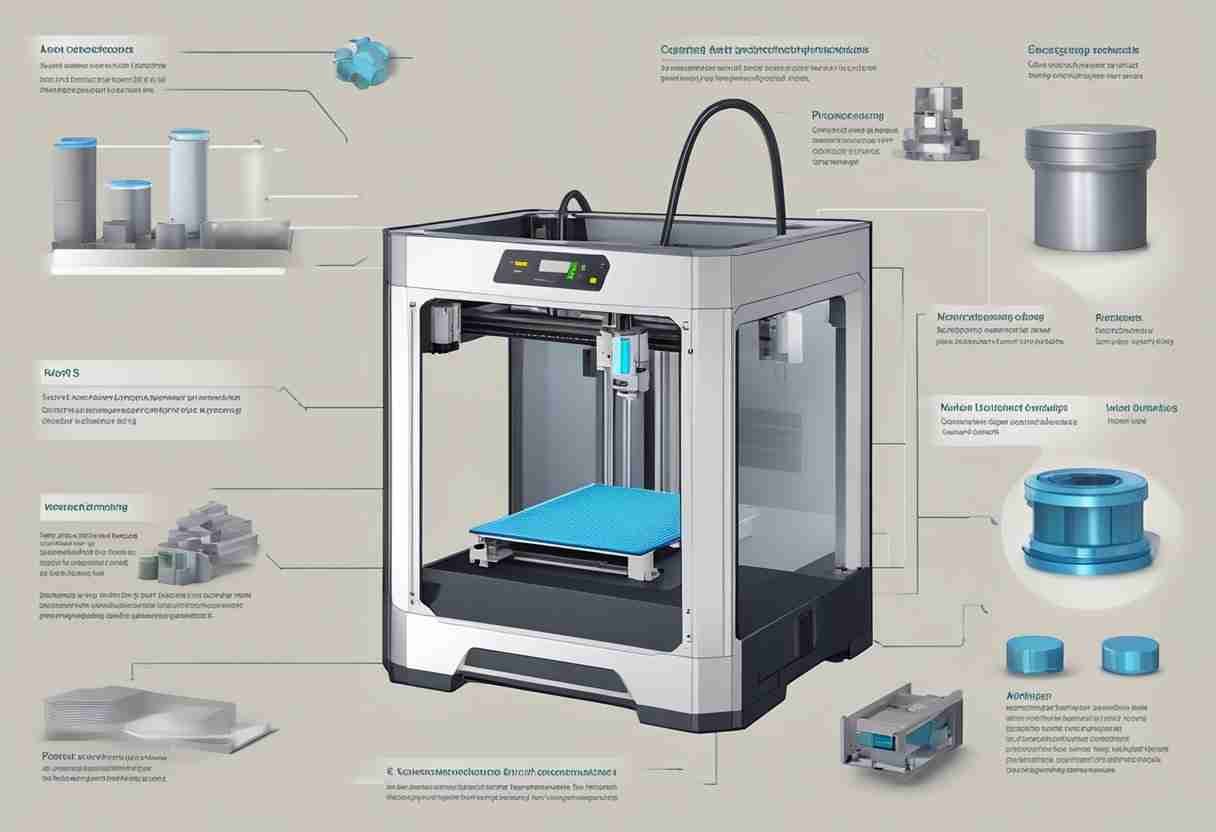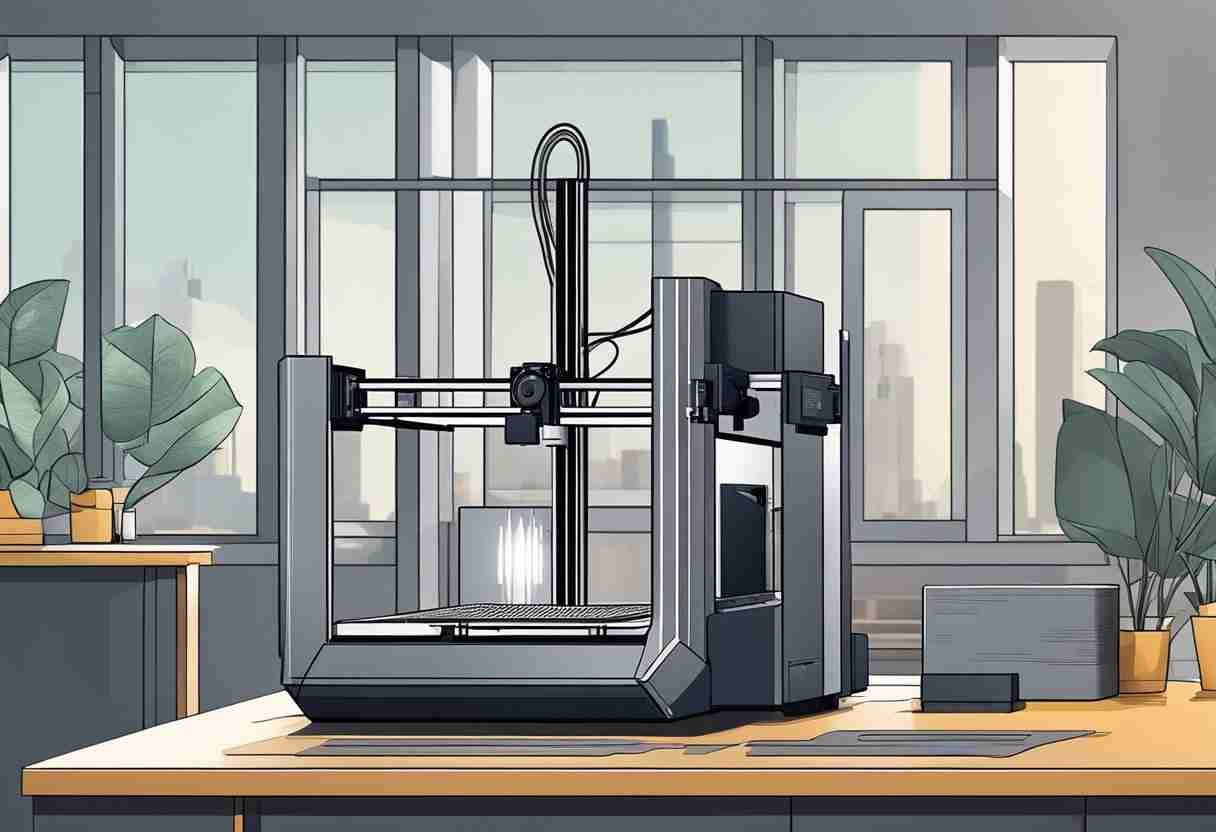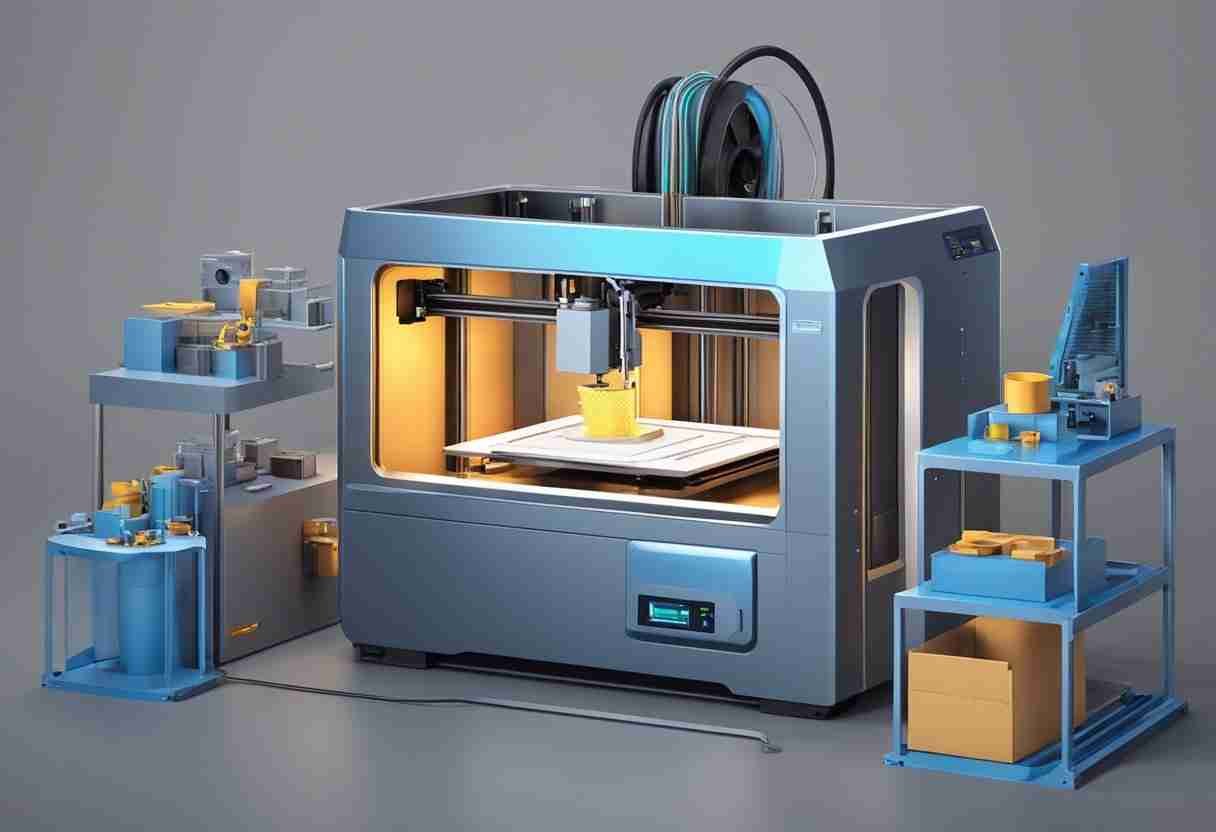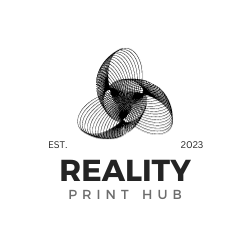Metal 3D printing, an advanced manufacturing process that fabricates parts layer by layer from metal powders or wires, has become an instrumental technology in various industries. The cost of metal 3D printing can vary widely and is influenced by several factors, including the type of metal, the complexity of the parts, the volume of production, and the degree of post-processing required.

The cost of raw materials, such as metal powder or wire, contributes to the overall expense. Metal powders such as steel and titanium alloys vary in price based on their type and quality. Specialty materials like Nitinol are priced higher.
When investing in a metal 3D printer, it's important to consider the initial purchase price and ongoing operational costs. Printers can vary from basic models suitable for small businesses to advanced machines capable of producing industrial-grade parts. Additionally, the speed at which a printer operates can impact productivity and, thus, the cost per part.
Overview of Metal 3D Printing
Metal additive manufacturing, or 3D printing with metal, is transforming industries by enabling the production of intricate components with a wide range of metals. This technology is harnessing the power of digital design and high precision.
Printing Technology Explained
Additive Manufacturing: This process involves adding material layer by layer to create objects from 3D model data, in contrast to traditional subtractive manufacturing methods.
Direct Metal Laser Sintering (DMLS) and Selective Laser Melting (SLM): Both techniques use a laser to sinter fine metal powder, bonding them to form a solid structure, often under an inert gas shield. While DMLS produces a slightly porous finish, SLM produces dense and robust parts by fully melting the powder.
Electron Beam Melting (EBM): Utilizes a focused beam of electrons to melt metal powder in a vacuum. This technology is similar to SLM but operates at a higher temperature, which is beneficial for specific alloys.
Binder Jetting: This technology does not use heat to merge metals during printing. Instead, a liquid binding agent is deposited onto a layer of metal powder, which is later sintered in an oven to fuse the material.
Powder Bed Fusion: In the powder bed fusion processes encompassing DMLS and SLM, a layer of powder is spread and selectively melted or sintered.
Advantages of Metal Additive Manufacturing
Complexity for Free: One key advantage of metal additive manufacturing is the ability to create complex shapes that would be impractical or very expensive to achieve through subtractive methods or casting.
Economical Low-Volume Production: Metal 3D printing is cost-effective for low—to medium-volume production, as it does not require expensive tooling and molds.
Material Variety: Various metals, including stainless steel, aluminum, titanium, and exotic alloys, can be utilized for industry-specific applications.
Sustainability: Additive manufacturing can be a more sustainable alternative to traditional methods as it generates less waste during production.
Cost Analysis of Metal 3D Printing

In additive manufacturing, metal 3D printing is known for its precision and versatility. However, it comes with a complex web of costs.
Understanding Printing Costs
Metal 3D printing encompasses various technologies, each with unique cost structures. Printing costs are determined by the features of the device and the expenses incurred in post-processing. High-resolution prints necessitate more layers and significantly longer build times, amplifying the cost.
Material and Powder Costs
The material cost for metal 3D printing—particularly the metal powder used in processes like DMLS—can vary. While some steels may be relatively affordable, niche alloys like Titanium or Nitinol can be expensive. Costs for these materials may range from $79/kg to a staggering $738/kg. The overall cost of producing a part through additive manufacturing is heavily influenced by the volume of metal powder required, which is determined by the dimensions and density of the part.
Machine and Printer Investment
The cost of a 3D printer and the investment expenses are crucial factors that must be considered. Purchasing a metal 3D printer may require significant capital, often reaching hundreds of thousands of dollars for industrial-grade machines. Printing services enable businesses to print metal parts without owning the equipment, reducing upfront investment but potentially increasing the overall cost per part. Businesses must calculate the break-even point and long-term savings when considering an investment in metal 3D printing technologies.
Components of Metal 3D Printing Costs

The cost of 3D metal printing is determined by various factors, including the level of expertise required, operational costs, and additional procedures needed post-printing. To effectively budget for these costs, it is vital to comprehend the different cost components involved in metal 3D printing projects.
Labor and Operational Efficiency
Labor costs constitute a significant portion of metal 3D printing, where specialized knowledge is often a prerequisite. The cost of operating printers can increase due to the manual labor involved in overseeing the printing process, handling post-processing steps, and removing support structures. Operational efficiency will help to mitigate these expenses as it reduces the time and labor investment per printed part.
Support Structures and Additional Costs
During 3D printing, support structures are necessary to maintain complex features, but they add extra costs for materials and post-processing time. Removing these structures is a manual task, and the labor-intensive nature of this step can further increase the overall expense. Additionally, certain metals require a heat treatment process to achieve desired material properties, which adds an extra layer to the total cost.
In the context of metal 3D printing, striving for high operational efficiency is key to managing the inherent high cost of production.
Comparison to Traditional Manufacturing

In evaluating the cost of metal 3D printing, it is wise to consider how it compares to traditional manufacturing methods. Traditional methods, such as CNC machining, have been the cornerstone of metal part production, but the landscape is evolving rapidly with the advent of additive manufacturing technologies.
3D Printing Cost Benefits vs. CNC Machining
Specific use cases of metal 3D printing have significant cost benefits compared to CNC machining. Metal 3D printing does not require the same level of setup as CNC machining, which often involves creating and preparing specific tools. A cost analysis by 3DEO shows that CNC tooling initial investment can be expensive, particularly for low-volume or complex parts, affecting the overall production cost. In contrast with traditional manufacturing methods, metal 3D printing enables direct construction from digital models, eliminating the need for additional tooling and potentially reducing up-front costs.
- Tooling Costs:
- CNC Machining: High (specific tools required)
- Metal 3D Printing: Low (no tool-specific investment)
- Complexity and Customization:
- CNC Machining: Increased complexity increases costs.
- Metal 3D Printing: Complexity has a lesser impact on cost.
Metal 3D printing is an attractive option for producing complex or custom parts in smaller quantities where traditional methods' tooling cost does not make economic sense.
When to Choose Metal 3D Printing
Metal 3D printing is particularly beneficial in scenarios where the complexity of the parts can be a limiting factor for traditional methods. As Xometry outlines, 3D printing offers significant design freedom, enabling the creation of complex geometries that would be difficult or impossible to achieve through CNC machining. It is a viable choice for intricate, lightweight, and durable components often utilized in aerospace, automotive, and medical industries.
3D printing technology also supports mass customization, where traditional manufacturing methods lag due to the need for individual tooling setups for each variation. With metal 3D printing, customizing parts does not incur these tooling requirements since changes can be made digitally. Therefore, it makes more economic sense in a production setting where customization is key.
Deciding Factors for 3D Printing:
- Part Complexity: High complexity favors metal 3D printing.
- Customization Needs: Frequent changes and customization are cost-effective with 3D printing.
- Volume: Metal 3D printing can produce low to medium volumes more economically, eliminating specific setup costs.
In these situations, 3D printing maximizes the benefits of metal, making it a powerful alternative to conventional production.
Understanding the Impact of Metal Type

Variations by Metal Type
The cost of 3D metal printing varies depending on the metal used. Each metal alloy has specific properties that affect the final cost. For example, stainless steel is generally more affordable than specialized alloys like cobalt chrome. Basic stainless steel generally costs less than cobalt chrome due to differences in availability and the complexity of the powder production process.
Specifics for Stainless Steel and Other Alloys
Stainless steel, known for its durability and corrosion resistance, is often a go-to choice for many applications. Compared to other metals, the cost of stainless steel powder is relatively affordable. In contrast, alloys such as cobalt chrome come at a higher price point due to their high strength and temperature resistance.
Pricing Strategies for 3D Printing Services
Metal 3D printing service providers implement different pricing strategies to cater to their customers' varying requirements. The choice of materials, design complexity, and order volume are key components of the cost structure.
- Cost-Plus Pricing: A common pricing strategy that involves calculating the total cost of materials, labor, overhead, and adding a markup. This transparent approach is preferred by clients looking to understand the breakdown of their expenses.
- Value-Based Pricing: Pricing is based on customers' perceived value of the printed parts. This method reflects more the real use-case utility than the production cost alone.
- Dynamic Pricing: This is used when demand fluctuates or is sensitive to turnaround time; prices may be adjusted to balance the provider's workload and the customer's urgency.
Printing Options:
Small Batch - Higher per-unit cost due to setup
Bulk Orders - Cost efficiency from scale
Providers also consider the component's design intricacy. Complex parts may require more time and precision, thus incurring higher charges.
To stay competitive, 3D printing services typically offer discounts or tiered pricing structures for larger projects to attract volume-based customers.
Calculating the Total Cost of a Printing Project
Materials, machine operation, and labor are factored into the total cost of a metal 3D printing project. These costs are necessary for pricing and profit.
Estimating Production and Part Costs
Estimating production and part costs involves the assessment of raw materials and machine operation expenses. Materials are recurring costs that fluctuate based on market prices and the required quality. For Direct Metal Laser Sintering (DMLS), material cost isn't the primary expense driver due to its efficiency in processing metal powders. Machine time often dictates the bulk of the expenditure. The required resolution of the print also impacts cost; higher resolution necessitates more layers, thus extending printing time and increasing costs.
Labor is an additional component that covers the expertise required for machine operation and post-processing of parts. Complex parts may require significant labor to finish, increasing the part costs. An accurate calculation takes into account the time to set up and oversee. The final price equals the sum of material, labor, machine costs, and a profit markup by the service provider.
Lead Time and Speed Considerations
Lead time in metal 3D printing encompasses the initial design to the finalized product. Print speed, which varies based on the desired resolution and the part's complexity, is a pivotal factor impacting lead time. Faster print speeds reduce lead time but might lead to higher costs due to increased wear on the printer and the need for additional electrical output.
A rule of thumb is that 3D printing complexity doesn't necessarily inflate costs in additive manufacturing as in traditional methods. However, it's important to balance speed, cost, and quality. When calculating lead time, service providers must include time for machine setup, actual printing, cooling periods, and post-processing work, ensuring that no aspect of the process is overlooked in the speed calculation.
Factors Influencing the Price of Metal 3D Prints
The cost of metal 3D printing is impacted by various factors, primarily the design's complexity and the final print's physical characteristics. Careful consideration of these aspects is vital for accurate cost estimation.
Complexity and Part Size
- Complex Parts: Designs with intricate geometries typically require more resources in terms of time and materials. Printers must perform additional operations to produce complex geometries, which adds to the expense.
- Part Size: Larger parts consume more material and printer time. Conversely, smaller parts reduce material usage but can still be costly if they feature complicated design elements.
Resolution and Surface Finish
- High Resolution: Higher resolution prints, which offer finer details, necessitate longer print times and more precise machinery, often resulting in increased costs.
- Surface Roughness: Desired surface finishes require varying levels of post-processing. A smoother finish demands extensive post-processing, which can be a substantial portion of the overall printing cost.
Choosing the Right Printer and Material
The essential first step in metal 3D printing is selecting an appropriate printer and material. Costs vary depending on the type and capabilities of the machine and the metal material used.
Desktop Metal and SLM Machines
Desktop Metal Printers are tailored for convenience and geared towards businesses and researchers who require metal prototyping on a smaller scale. These printers offer a more compact solution with a smaller footprint, making them suitable for office environments. Technologies behind these systems, such as bound metal deposition, allow a smoother transition from printing to sintering.
On the other hand, SLM (Selective Laser Melting) machines represent the industrial side of metal printing. These machines utilize high-powered lasers to fuse metal powder layers. Given their advanced capabilities, SLM machines can handle complex geometries and are regarded as the best method for producing parts that must withstand high stress. As one might expect, SLM machines are generally more expensive in initial investment and operation due to their intricate laser systems.
Metal Filaments and Powders
When considering materials, the choice between metal filaments and powders largely depends on the printing technology used. Metal filaments are wires fed into a printer, melted, and extruded to form a part. They are often found in deposit-based metal printer systems and are typically less costly than metal powders.
Metal powders are used in SLM and DMLS (Direct Metal Laser Sintering) machines. The price point for metal powders varies based on the alloy. For instance, standard 17-4PH steel powder may be found at a lower price point, while specialized titanium alloys like Nitinol come at a higher cost. Selecting the appropriate material involves balancing the material properties with the total cost of printing.
Making Cost-Effective Decisions in Metal 3D Printing
When considering metal 3D printing, two critical factors influence cost: the printing method selected and the total cost. These decisions can drastically affect the final product's price and mechanical properties.
Selecting the Best Printing Method
Metal 3D printing encompasses various technologies, each with its cost implications. Selecting the cheapest option is not always straightforward, as the best option would depend on the final product's specific application and required mechanical properties. For instance, DDirect Energy Deposition (DED) technologies have the potential to be more cost-effective due to the use of less expensive raw materials, such as metal wire, when compared to powder-bed fusion methods. However, applications that require superior mechanical properties may be better suited for technologies like Selective Laser Melting (SLM) or Direct Metal Laser Sintering (DMLS) despite their higher costs.
Optimizing for Cost and Quality
It's imperative to optimize both cost and quality to ensure a financially viable final product. This involves designing parts that use less material and print faster while maintaining performance. For instance, using a lattice structure can reduce the quantity of material used and manufacturing expenses while maintaining structural integrity. When choosing a printing method, it's essential to consider the post-processing requirements, as they can affect the final cost. Some printing methods may produce parts that require more finishing work, which can drive up the expense. The key is to balance the required quality and the lowest possible cost.
Future of Metal 3D Printing Costs
As metal additive manufacturing evolves, the costs associated with metal 3D printing are expected to follow a dynamic trend.
Printing systems and 3D printer manufacturers are central to cost developments. With technological advancements, manufacturers may offer more cost-effective solutions for home enthusiasts and industries. This could manifest in reduced prices for machines or more efficient printers that lower overall production costs.
In terms of materials, metal injection molding has been a traditional, cost-friendly alternative for metal part production. However, print metals such as steel, titanium, and nickel alloys may also reduce cost as supply chains become more efficient. Here's a quick overview of potential price trends:
- Entry-Level Printers: Increasing affordability due to competitive markets.
- Industrial Systems: Potential cost stabilization as technology matures.
- Material Costs: Price decreases as new suppliers enter the market.
Furthermore, the drive towards sustainability in metal production may also introduce recyclable materials to lower costs.
Making precise predictions about the cost of metal 3D printing can be difficult, but technological advancements will significantly influence these costs. As the industry grows and becomes more established, we can expect to see a combination of quality, accessibility, and affordability in metal additive manufacturing.
Frequently Asked Questions
Efficient budgeting and decision-making for metal 3D printing requires a good understanding of total product cost. The following frequently asked questions provide insights into the various costs of metal additive manufacturing.
What factors influence the cost of metal 3D printing?
Factors such as machine time, labor for part finishing, build resolution, and type of material used all contribute to the cost of metal 3D-printed parts. Higher resolutions require more layers, increasing machine time, which is a significant cost driver.
What is the average price range for industrial metal 3D printers?
Professional metal 3D printers typically cost $100,000 to $500,000 and upward. Prices vary depending on the printer's technology, capabilities, and associated costs such as maintenance, materials, and post-processing equipment.
How is the cost of metal 3D printing powder calculated?
The cost of metal powder for 3D printing varies, ranging from $79/kg for certain steel powders to considerably more for advanced titanium alloys. Powder cost depends on material type, quality, and quantity purchased.
What are the costs associated with 3D printing in titanium versus other metals?
Due to its advanced properties, titanium, a high-performance metal, is often more expensive for 3D printing than other metals. In comparison, stainless steel or aluminum materials are relatively less costly.
How can one estimate the price of 3D printing a metal part?
Estimating the price of a metal 3D-printed part requires a general understanding of 3D printing, including machine time, volume of material used, part complexity, and post-processing work. Some service providers offer online quotation tools to help approximate these costs before committing to a print job.
What services offer metal 3D printing?
Many companies offer metal 3D printing services, with pricing based on the metal type, part complexity, finishing needs, and order quantity. Some providers also charge for design services and post-processing work, which add to the overall cost of the print.
